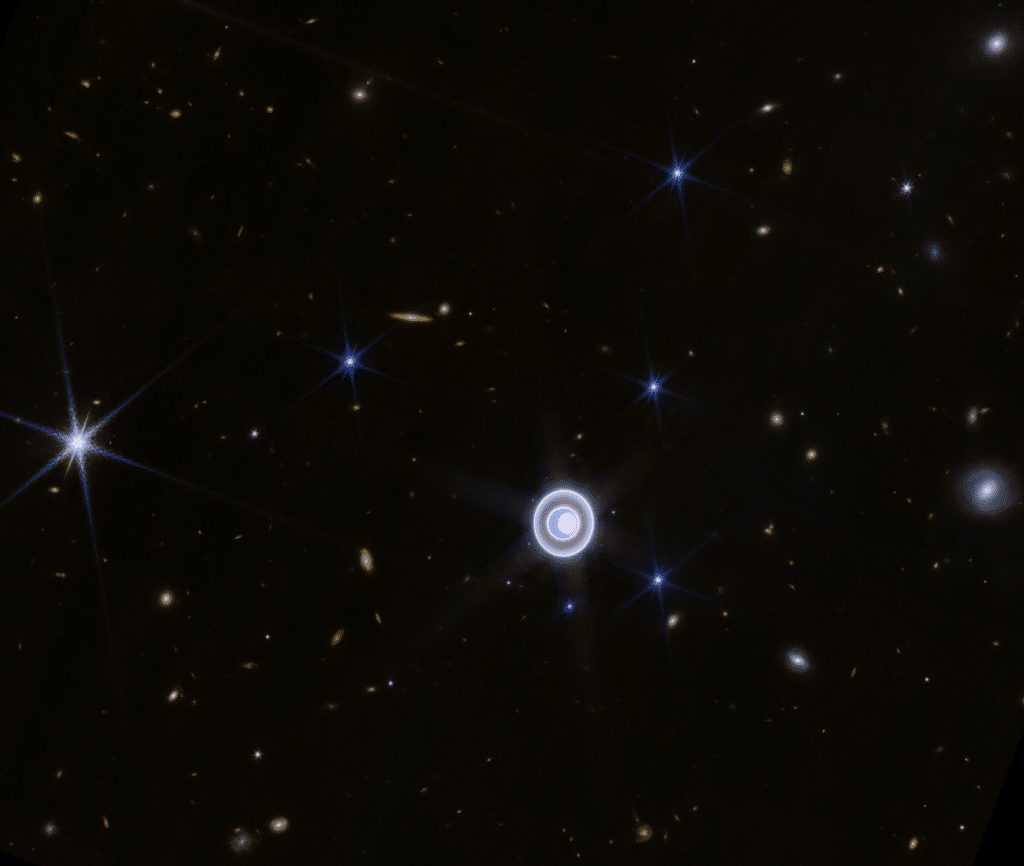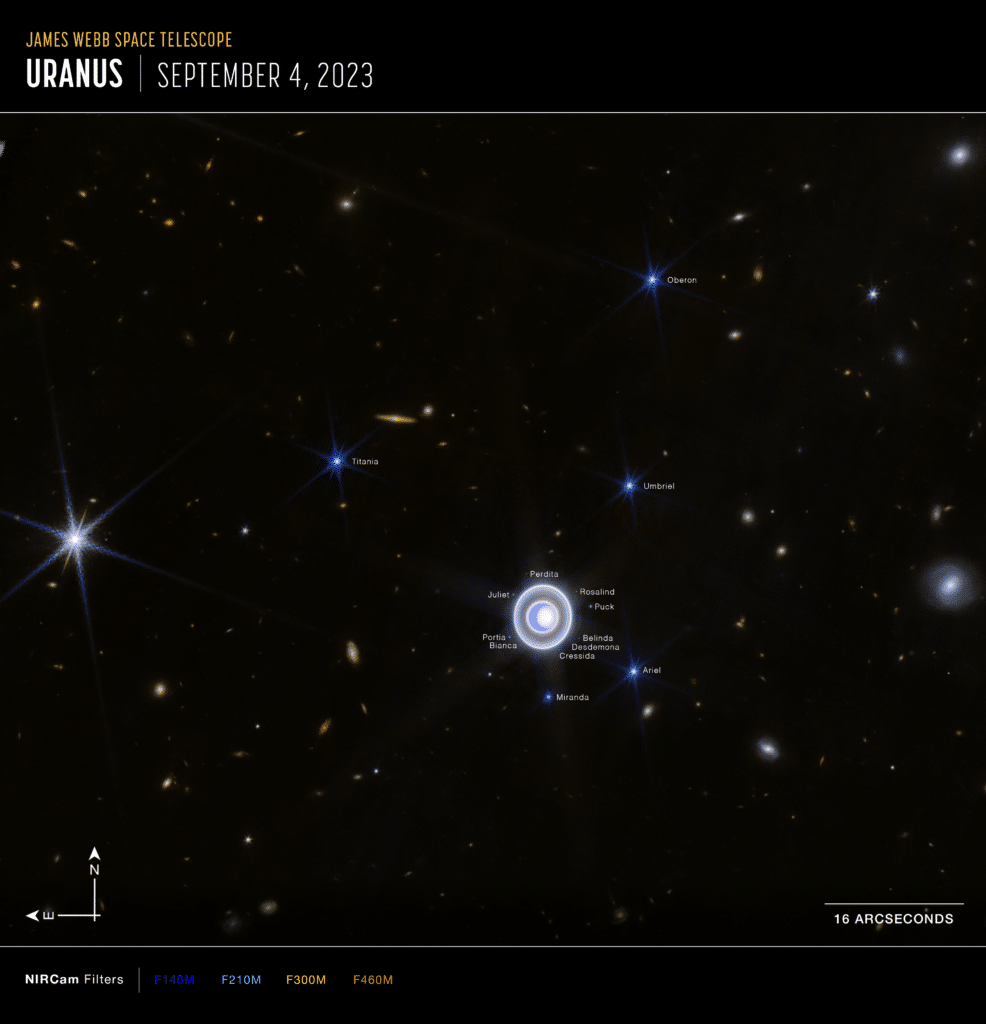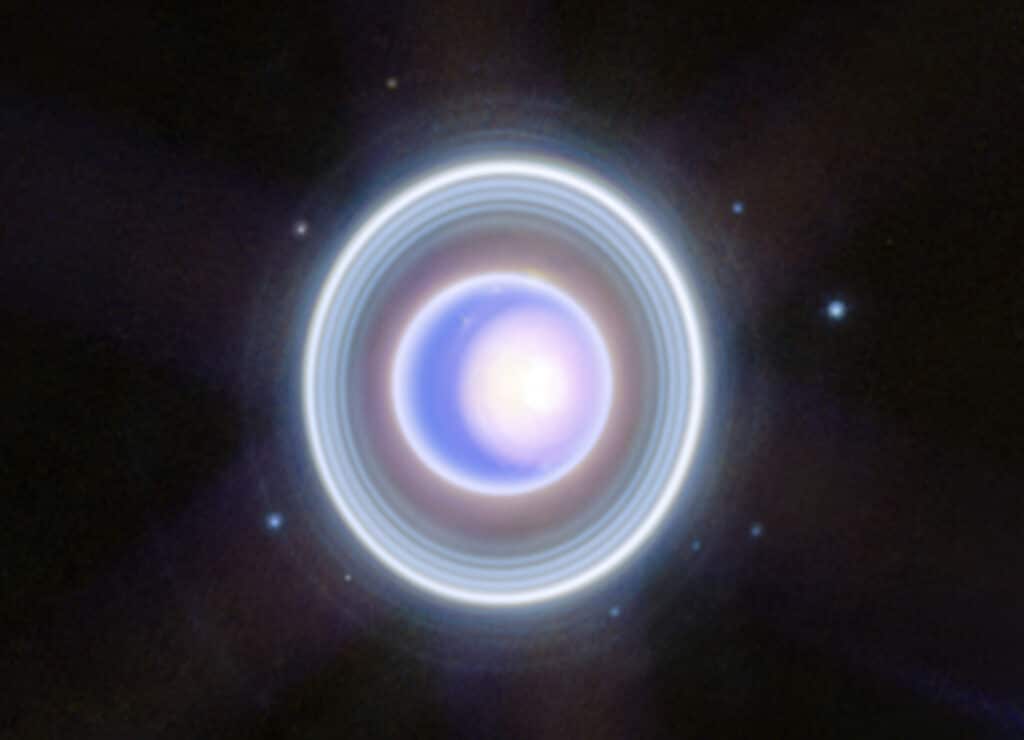When we think about a ringed planet in our solar system, Uranus probably isn’t the first world that comes to mind. NASA’s James Webb Space Telescope is now providing a spectacular new perspective on Uranus, one of the solar system’s most enigmatic planets. Forget the placid blue ball of the Voyager 2 days – Webb’s infrared vision paints a picture of a vibrant, stormy Uranus adorned with dazzling rings, moons, and a fascinating seasonal polar cap.
Unraveling Uranus’s Secrets
The images captured by Webb are a significant improvement over previous observations. In the 1980s, the Voyager 2 spacecraft depicted Uranus as a tranquil, solid blue sphere. Now, thanks to Webb’s infrared technology, we see a “strange and dynamic ice world filled with exciting atmospheric features,” says NASA.
Uranus, classified as an ice giant, presents a fascinating subject for astronomers. Forget the big, bright rings we associate with Saturn. The Webb Telescope’s keen eye has spotted Uranus’ elusive Zeta ring, a faint, wispy band hugging the planet like a shy ghost. It’s also captured many of Uranus’s 27 known moons, some even nestled within the rings like celestial confetti.
But the real showstopper is the north polar cap. This swirling vortex of clouds changes with the seasons, growing brighter as the Sun’s spotlight shines directly on it. Webb’s new images reveal intricate details within the cap, like a bright, white inner core and a dark, mysterious lane that seems to be drawn towards the equator.
NASA researchers also identify “several bright storms can also be seen near and below the southern border of the polar cap,” suggesting a complex interplay of seasonal and meteorological factors.

Understanding the Unusual Tilt
Uranus’s peculiar 98-degree axial tilt leads to extreme seasonal variations. For about one-quarter of its year, which equates to 21 Earth years, one pole is bathed in continuous sunlight, while the other is shrouded in darkness. This tilt is a crucial factor in the planet’s unique meteorology.
Astronomers are particularly excited about observing Uranus as it approaches its next solstice in 2028. This event might reveal further changes in the planet’s atmospheric features. Webb’s infrared capabilities are key to disentangling the seasonal and meteorological effects on Uranus’s weather patterns.
The findings from this study extends beyond our solar system. It serves as a proxy for understanding the approximately 2,000 exoplanets of similar size discovered in recent decades. By studying Uranus, astronomers hope to glean insights into the workings, meteorology, and formation of these distant worlds, thereby enhancing our understanding of the solar system and its place in the universe.
And of course, the Webb Telescope’s unprecedented observations not only give us a stunning new view of this enigmatic planet, but also provide crucial information for planning future missions. The detailed maps of the rings, especially the elusive Zeta, will be invaluable for any spacecraft venturing into Uranus’s icy realm.













